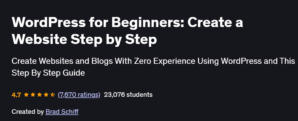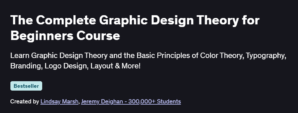What will you learn in Introduction to Design Sketching Course
- Use industrial-design sketching techniques to draw objects straight from your imagination
- Accurately render objects in one-, two-, and three-point perspective
- Apply advanced repetition and mirroring methods to maintain symmetry and consistency
- Train freehand line control for confident, precise strokes
Program Overview
Module 1: Foundations of Design Sketching
⏳ 30 minutes
Topics: Course pipeline, basic tools (pen, paper), line quality essentials
Hands-on: Warm-up exercises: straight lines, curves, and circles freehand
Module 2: Sketching Objects from Imagination
⏳ 45 minutes
Topics: Breaking complex forms into simple primitives, construct-draw method
Hands-on: Sketch everyday objects by combining cubes, cylinders, and spheres
Module 3: Perspective Drawing Techniques
⏳ 45 minutes
Topics: One-, two-, and three-point perspective grids and vanishing points
Hands-on: Draw a series of boxes and product shapes in each perspective
Module 4: Advanced Mirroring & Repetition
⏳ 30 minutes
Topics: Symmetry lines, mirror-draw workflow, repeating patterns accurately
Hands-on: Create symmetric components (e.g., spokes, fins) with freehand mirroring
Module 5: Muscle-Memory Building Exercises
⏳ 1 hour
Topics: Rapid-sketch drills, timed drawing sessions, error-correction loops
Hands-on: Timed 30-second sketches of product silhouettes, followed by refinement
Get certificate
Job Outlook
Industrial Designer / Concept Sketch Artist: $60,000–$85,000 annually, creating product concepts and early-stage visuals
UX/UI Designer (Sketching Phase): $70,000–$95,000, using sketching to prototype interfaces and user flows
Freelance Sketch Illustrator: $30–$75 per hour for rapid concept art and client presentations
Strong sketching ability accelerates roles in product design, architecture, and creative direction
Specification: Introduction to Design Sketching Course
|
FAQs
- Yes, the course focuses on foundational sketching techniques applicable across various design disciplines.
- Skills like perspective, shading, and proportion can be adapted to fashion, interiors, or product concepts.
- Learners gain the ability to communicate ideas visually, regardless of design specialization.
- Practicing different subject matter helps in transferring skills to specific industries.
- Advanced field-specific sketching may require supplemental courses.
- No prior experience is required; the course is beginner-friendly.
- It introduces basic tools, techniques, and exercises for foundational sketching skills.
- Step-by-step lessons build confidence in drawing shapes, lines, and proportions.
- Regular practice helps learners improve visual communication effectively.
- Even complete beginners can produce clear, professional sketches by the end.
- Yes, the course emphasizes visual storytelling and idea communication.
- Techniques include using perspective, scale, and annotations to clarify concepts.
- Learners practice translating abstract ideas into clear visual representations.
- Emphasis is placed on sketching efficiently for brainstorming or presentations.
- These skills help in pitching designs to clients, teams, or instructors.
- The course primarily focuses on traditional sketching methods.
- Principles learned (lines, shading, perspective) are directly transferable to digital tools.
- Learners can experiment with software like Procreate, Photoshop, or Illustrator.
- Combining traditional skills with digital tools enhances flexibility and workflow.
- Digital adaptation may require practice with specific software features.
- The course introduces both observational and imaginative sketching techniques.
- Learners practice drawing from real objects, reference images, and creative ideas.
- Understanding proportions, perspective, and shading supports both approaches.
- Exercises encourage developing a personal style while maintaining accuracy.
- Balancing observation and imagination helps create professional and creative sketches.





